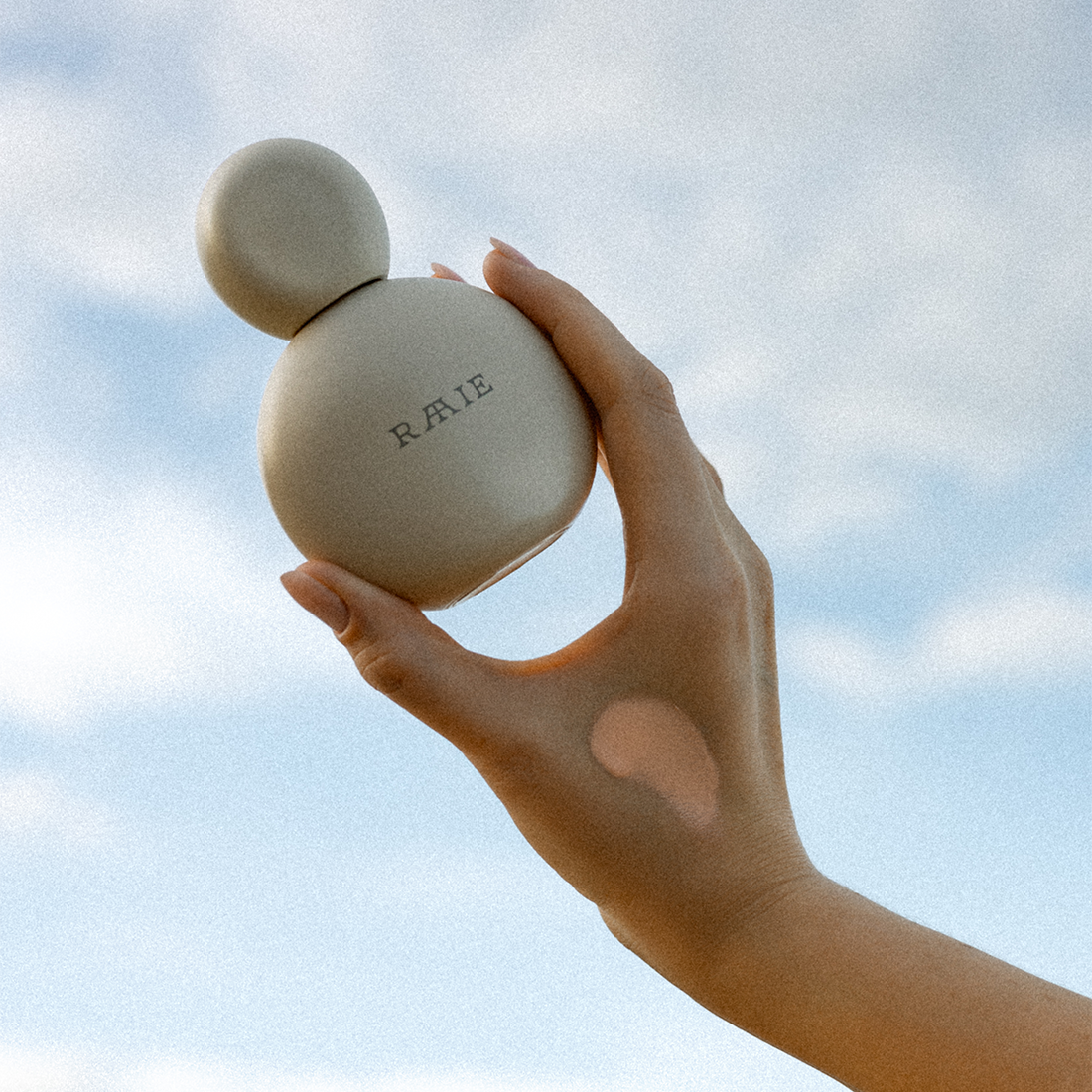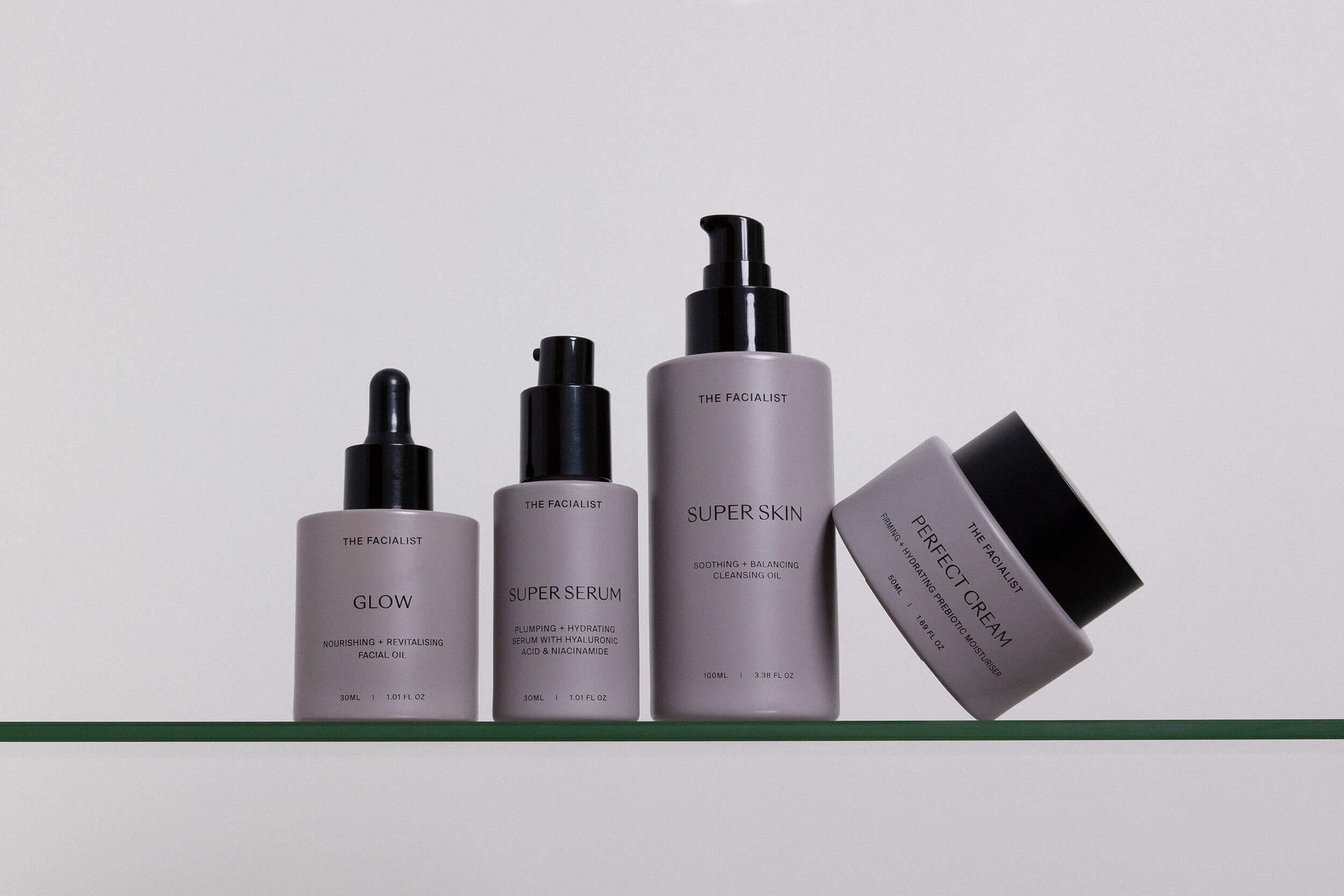SPF Q&A with Raaie

Why is it important to protect yourself from the sun?
Wearing a face SPF every day is key to healthy – and healthy-looking — skin. A good sunscreen blocks the harmful effects of the sun’s UVA and UVB rays, which wreak havoc on the health of our skin and its cells, leading to decreased collagen and elasticity, fine lines, pigmentation, and an increased risk of skin cancer if an SPF is not used.
What’s the difference between a chemical and mineral sunscreen?
Think of it like a sponge and a shield. Chemical sunscreens act like a sponge and ABSORB UV light. Whereas physical sunscreens act more like a shield and DEFLECT the sun's rays (that’s why you sometimes hear them being referred to as a physical sunscreen).
Is chemical or mineral better for me?
Chemical sunscreens are detected in the bloodstream just 2 hours after application, and many of the ingredients used are harmful to our coral reefs. So we always prefer a mineral option. But mineral SPFs have traditionally been sticky and greasy, quick to clog pores, and prone to imparting a grey hue over darker skin tones. RAAIE’s Sun Milk Drops have solved this with revolutionary new technology to make an ultra lightweight mineral sunscreen.
Do I need to wear sunscreen all year round?
80-90% of extrinsic aging (the signs we can see like wrinkles, dullness, sagging and pigmentation) are not caused by “aging” or time, they are caused by exposure to UV rays. Imagine if you could look 80-90% younger in 20 years’ time? And that’s just aesthetics.
Living in New Zealand, we are exposed to 40% higher UV radiation than similar latitudes in North America, which is why there is such a high incidence of skin cancer (it is the most common cancer affecting New Zealanders).
Studies show that wrinkles and sagging can appear 20 years earlier in women in the Southern hemisphere, compared to our Northern hemisphere sisters. This sun damage accelerates signs of ageing like wrinkles, rough, dull skin, brown spots, red veins and sagging.
We all need to be wearing sunscreen Every. Single. Day. Even the cloudy days. Even when we are inside (yes, UV rays can can penetrate windows to reach the skin). And we also need to re-apply throughout the day to get the correct protection.
What is broad spectrum?
Sunscreens should be "broad-spectrum”, meaning they have UVA and UVB protection. Rays that come from the sun fall into a number of different wavelengths. The SPF on the bottle mainly gives us information about UVB, which is the wavelength of light which causes burning and is responsible for skin cancers. We know that other wavelengths of light, particularly UVA, are detrimental to the skin, causing ageing and wrinkling.
Is a high-number SPF better than a low-number one?
15, 25, 30, 50... Wherever you shop sunscreen, there will always be a number following 'SPF' on each label. SPF or 'sun protection factor’ tells us how much longer we can stay out in the sun without burning, compared to our natural protection.
Dermatologists recommend using a sunscreen with an SPF of at least 30, which blocks 97% of the sun's UVB rays. Higher-number SPFs block slightly more of the sun's UVB rays, but no sunscreen can block 100% of the sun's UVB rays (that’s why it’s important to use an antioxidant serum underneath your SPF, which can scavenge UV rays that sneak through your sunscreen).
It is also important to remember that high-number SPFs last the same amount of time as low-number SPFs. A high-number SPF does not allow you to spend additional time outdoors without reapplication. As many individuals only apply about 50% of the amount of sunscreen needed to achieve the amount of SPF on the label, application of high-SPF sunscreens help to compensate for this under-application. Sunscreens should be reapplied approximately every two hours when outdoors, even on cloudy days, and after swimming or sweating, according to the directions on the bottle.
What’s different about RAAIE’s Sun Milk Drops?
It’s a mineral sunscreen that’s silky smooth and absorbs quickly for an invisible finish. It has a soft peach tint leaves all skin tones with a lit-from-within glow, and primes skin for makeup without clogging your pores.
The high protection SPF50+ is designed for our harsh New Zealand sun, delivering broad spectrum protection with non-nano zinc oxide, shielding against not only UVA and UVB rays, but other skin damaging aggressors such as infrared radiation, pollution and digital blue light.
Do people with darker skin need to wear sunscreen? Can you get away with a lower factor?
Everyone should use sunscreen with an SPF of 30 or higher.
People with darker skin have more melanin to absorb harmful UV rays, but that doesn't mean dark skin is immune to damage caused by the sun. Photodamage in people with darker skin tones leads to sagging of the skin, loss of volume in the face, and hyperpigmentation. While people with lighter skin tones tend to see fine lines and wrinkles show up first, darker skin tones will see changes in pigmentation that lead to dark patches (melasma) and uneven skin tone as a result of sun damage. People who have darker skin—and the slight protection that extra melanin provides—might be tempted to skimp. But New Zealand has one of the highest incidence rates of melanoma in the world, and a broad spectrum SPF of 30 or more is important for all skin tones.





